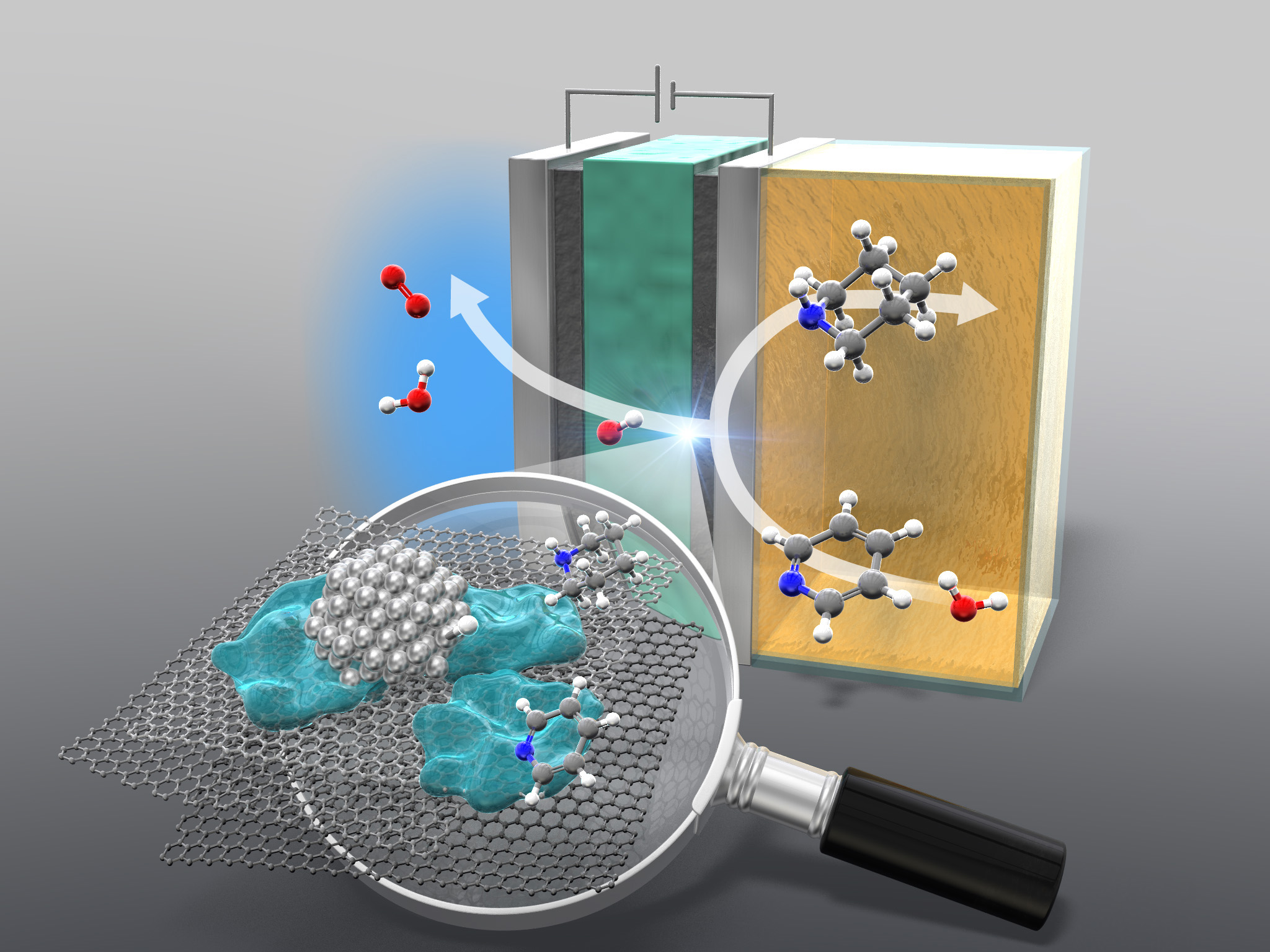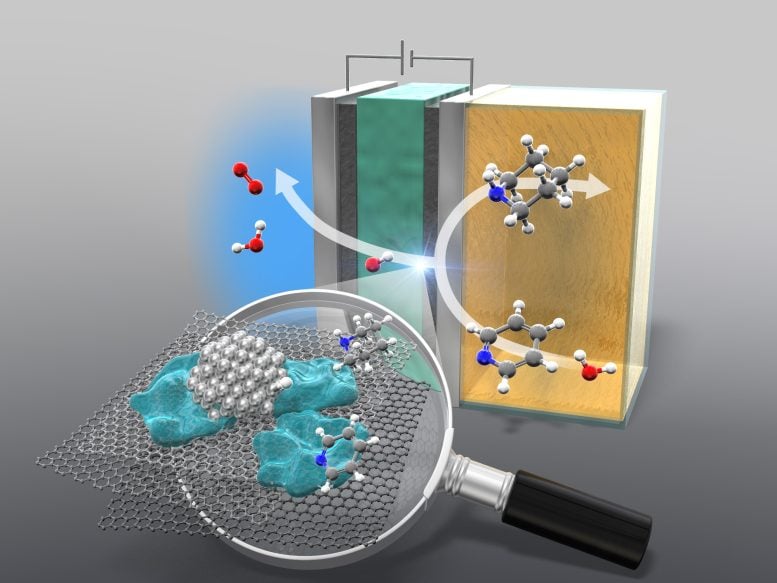

A new study introduces an eco-friendly method using an AEM electrolyzer to hydrogenate cyclic amines, reducing the chemical industry’s carbon emissions. This process replaces fossil fuels with water and renewable electricity, maintaining high efficiency.
To reduce the environmental impact of the chemical manufacturing industry, it is crucial to develop greener methods for producing the chemical building blocks of widely used compounds.
It’s no secret manufacturing processes have some of the most impactful and intense effects on the environment, with the chemical manufacturing industry topping the charts for both energy consumption and emissions output. While this makes sense thanks to the grand scale in which manufactured chemicals are involved in daily life, it still leaves a lot to be desired for sustainability’s sake. By focusing on renewable energy sources and alternative methods for creating the chemical building blocks of some of the most commonly used compounds, researchers hope to reduce the chemical manufacturing industry’s footprint with some green innovation.
Researchers published their results in the Journal of the American Chemical Society on October 7.
The main focus of this study is cyclic amines, as these are the most important building blocks for fine chemicals. These compounds are arranged in a ring and, in this case, have a nitrogen atom. One of the stars of the show is pyridine, which gives way to piperidine, a cyclic amine that is of key importance in the fine chemical industry. Piperidine, for example, provides the framework for many materials such as FDA-approved drugs, pesticides and everyday materials used in many people’s lives.
Traditional Methods and Their Limitations
Typical methods of adding hydrogen to a nitrogen-containing cyclic amine involve using hydrogen gas as a proton and electron source. The hydrogenation process relies on hydrogen obtained through the steam reforming of methane, a major greenhouse gas. Not only is this method energy-intensive, but it also is responsible for around 3% of the global carbon dioxide emissions. This process is also highly dependent on fossil fuels and takes a great amount of energy. Fortunately, researchers have found a way around this by developing an anion-exchange membrane (AEM) electrolyzer.
An AEM electrolyzer allows for the hydrogenation of different kinds of pyridines at ambient temperature and pressure, without having to use acidic additives like in traditional methods. The electrolyzer works to split water into its components, atomic hydrogen and oxygen. The atomic hydrogen obtained is then added to the cyclic compound. The AEM electrolyzer also demonstrates great versatility with other nitrogen-containing aromatics, making it a promising path for a wide set of applications. Additionally, by developing a method that can be used at ambient temperatures and pressures, the electrical energy needed for the process is dramatically decreased.
“The method offers significant potential for industrial-scale applications in pharmaceuticals and fine chemicals, contributing to the reduction of carbon emissions and advancing sustainable chemistry,” said Naoki Shida, first author of the study and researcher at Yokohama National University.
Benefits of the AEM Electrolyzer Method
This process uses water and renewable electricity as an energy source, contrasting with the reliance on fossil fuels for the conventional method. Efficiency has not been compromised with this method and the percent yield on a large scale is 78%, further affirming this technology can be reasonably scalable. One issue that might be encountered is an increase in cell voltage during the electrolysis process, but this can be mitigated through either improved AEM or, preferably, designing an AEM with organic electrosynthesis specifically in mind.
For the electrocatalytic hydrogenation technology to catch on and make a difference, it needs to be scalable to an industrial scale for pharmaceutical and fine chemical companies to use it. The more this technology is used, the easier it is to transition it to be used for other nitrogen-containing aromatic compounds, further expressing the practicality of the electrocatalytic hydrogenation process. Ideally, this method would establish itself as the alternative to traditional methods used in the chemical industry and down the line would reduce the overall carbon footprint chemical manufacturing leaves behind.
Reference: “Electrocatalytic Hydrogenation of Pyridines and Other Nitrogen-Containing Aromatic Compounds” by Naoki Shida, Yugo Shimizu, Akizumi Yonezawa, Juri Harada, Yuka Furutani, Yusuke Muto, Ryo Kurihara, Junko N. Kondo, Eisuke Sato, Koichi Mitsudo, Seiji Suga, Shoji Iguchi, Kazuhide Kamiya and Mahito Atobe, 7 October 2024, Journal of the American Chemical Society.
DOI: 10.1021/jacs.4c09107
The study was funded by the Japan Science and Technology Agency and the Japan Society for the Promotion of Science.